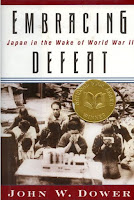© 2014 David Eimer
336 pages
The Emperor Far Away takes readers on a journey along China’s outer rim, beginning in the western steppes where the ‘Chinese’ are a minority, and following it south to the Tibetan plateau, the jungles of the Golden Triangle, up to the Korean border, and ending in the far north, where the snow only melts for three months of the year. Eimer’s travels would be fascinating in themselves, given the variety of landscapes and people encountered, but also shed light on the Chinese state’s interactions with its neighbors and internal ‘others’.
The people’s republic of China, like the supposedly vanished empire whose borders it revived, counts a multitude of peoples as its subjects. The Chinese state recognizes at least 56 ‘minorities’ within its borders. The Uighur people of Xinjiang, a larger group, are more Turkic than ‘Asian’, and hold fast to their own traditions -- particularly Islam. This annoys the Party to no end, and not only because it disdains religion. The unity of the Chinese state and its people -- unity controlled by the party -- is a fundamental doctrine of the government. Separatism is heresy, and since religion’s importance in creating cultural identities is rivaled only by language it remains anathema. Despite this, even its own people drift into religion: in the section on Tibet, we meet Chinese tourists who are searching for something in the Buddhist temples, and those near the Korean border are embracing exuberant evangelical sects like Pentecostalism.
The golden triangle is another area of interest. for here there exists narco-states that ignore national boundaries and impose their own authority on their subjects. These are not necessarily dangerous places, provided one is vouched for. The streets are patrolled by fifteen year olds with Kalushnikovs, and the economy largely consists of growing, processing, and shipping opioids -- including little red pills that are not swallowed, but exposed to flames and the smoke inhaled. China’s southern border encompasses both ‘model minorities’ and unyielding nomads, the latter of whom are most common in Tibet, where they have traded camels for motorbikes. Unlike Xinjiang and Tibet, the people in the golden triangle region are free from the fear that their culture will one day vanish: the Han are not settling en masse here as they are elsewhere.
Further north, near the border with Korea, readers encounter the ‘third’ Korea. The Yanbian prefecture of of China sits along the North Korean border, and nearly half of its population is ethnically Korean. Some are refugees from North Korea, others have drifted there more naturally -- and like American immigrants, many straddle two identities and refer to themselves as Chinese Koreans. The region is strongly influenced by South Korean culture, and particularly its abundance of churches. Because of the fusion of North Korean refugees and South Korean culture, Eimer believes Yanbian is an image of what a unified Korea might look like. Even further north Chinese culture mixes with Russian, instead, resulting in blonde-haired blue-eyed people with Chinese names.
If Emperor Far Away is anything, it is varied. Eimer takes us across steppes, up mountains, down rivers, into the jungle, and finally into areas so cold that the snow is only absent in the high summer. Eimer’s interest in meeting people off the beaten track makes for interesting reading as he uses his Mandarin, a few contacts, and the curiosity of people to make travel arrangements on the fly. Sometimes this meant breaking down in the middle of nowhere, bypassing border checkpoints, and hitching rides on cargo ships. Those interested in China’s place on the world stage will no doubt be interested in sections like the one on North Korea, where it is revealed the Chinese government treats North Korea like one of its autonomous prefectures: it doesn’t respect the Kims as leaders of a neighboring nation so much as it regards them as a necessarily evil. Better to manage the Kims and keep their economy from dying completely than to see the place collapse and all those starving Kim captives flood China. The chapter on the Chinese-Russian border is a reminder of how the Chinese are haunted by the Soviet Union’s sudden collapse, one of the reasons the Party is so ruthless about political dissent.
Emperor Far Away will easily rank as one of my more memorable and helpful reads this year.



















































